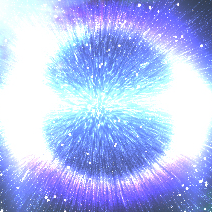Does antimatter behave like matter in gravity? This is the question a team of researchers wants to answer in the near future. If their behaviors happen to be different, it would have extremely important implications, and could maybe solve several long-standing problems.
Scientists from the University of California are on their way to measuring the free fall of antimatter, more precisely positronium, a bound state between an electron and a positron. The positron is the antiparticle or the antimatter counterpart of an electron: they are strictly identical, except for their opposite electrical charge. When the two particles meet each other, they annihilate, releasing energy in the form of two gamma rays.
So far the physicists managed to separate electrons and positrons in positronium, preventing this unstable system from annihilating too quickly, in order to measure the effects of gravity on it. This is indeed the main problem: in order to observe the physical properties of antimatter, it is necessary to keep it from annihilating too soon.
To do so, the researchers used lasers to excite positronium and bring it to a ‘Rydberg” state. In this state, the atom is weakly bound and the electron and the positron are far from each other: this gives more time before the particles annihilate. Rydberg atoms are highly excited, and very useful to physicists, as many of their physical properties become exaggerated.
The scientists were able to increase positronium’s lifetime by a factor of 10 to 100, which unfortunately remains too little. They are hoping to use a technique that imparts a higher angular momentum to Rydberg atoms, which would allow to increase their lifetime by a factor of 10000, enough to study them closely.
The next step will be to excite positronium further in order to reach a lifetime of a few milliseconds. Then, the researchers will make a beam of these highly excited atoms and study its deflection due to gravity.
If the experiment shows that matter and antimatter don’t behave the same way, this may have unprecedented consequences in physics. Indeed, matter and antimatter were theoretically created in equal amounts at the time of the BIg Bang. However, the Universe as we see it today seems to be almost entirely made of matter. A difference like this one might explain the phenomenon. Other researchers even suggested that antimatter may have a negative gravitational charge, creating an effect similar to dark energy.
Reference
D. B. Cassidy, T. H. Hisakado, H. W. K. Tom, and A. P. Mills, Jr. Efficient Production of Rydberg Positronium
Phys. Rev. Lett. 108, 043401
